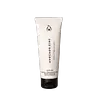Synergie Skin Uber Zinc Protective Daily Moisturiser SPF 15 Versus Avocado Zinc SPF 50 Natural Tinted Moisturiser
What's inside
What's inside
 Key Ingredients
Key Ingredients

 Benefits
Benefits

 Concerns
Concerns

 Ingredients Side-by-side
Ingredients Side-by-side

Water
Skin ConditioningZinc Oxide
Cosmetic ColorantCaprylic/Capric Triglyceride
MaskingGlycerin
HumectantIsoamyl Laurate
EmollientMethylpropanediol
SolventCetearyl Olivate
Cetearyl Alcohol
EmollientSorbitan Olivate
EmulsifyingSimmondsia Chinensis Seed Oil
EmollientCitrus Aurantium Dulcis Peel Oil
MaskingLimnanthes Alba Seed Oil
Skin ConditioningMacadamia Integrifolia Seed Oil
Skin ConditioningHydrolyzed Tomato Skin
Skin ConditioningTocopherol
AntioxidantCaprylyl Glycol
EmollientHelianthus Annuus Seed Oil
EmollientCeteareth-20
CleansingCyamopsis Tetragonoloba Gum
Emulsion StabilisingCamellia Sinensis Leaf Extract
AntimicrobialSodium Chloride
MaskingOenothera Biennis Oil
EmollientPrunus Amygdalus Dulcis Oil
Skin ConditioningRosa Canina Fruit Oil
EmollientSodium Phytate
Carthamus Tinctorius Seed Oil
MaskingOlea Europaea Fruit Oil
MaskingPhenylpropanol
MaskingCitric Acid
BufferingChamomilla Recutita Flower Oil
MaskingSodium Benzoate
MaskingAlcohol
AntimicrobialCalendula Officinalis Flower Extract
MaskingGlycine Soja Oil
EmollientPotassium Sorbate
PreservativeOlea Europaea Leaf Extract
PerfumingCitral
PerfumingLimonene
PerfumingLinalool
PerfumingSodium Hydroxide
BufferingWater, Zinc Oxide, Caprylic/Capric Triglyceride, Glycerin, Isoamyl Laurate, Methylpropanediol, Cetearyl Olivate, Cetearyl Alcohol, Sorbitan Olivate, Simmondsia Chinensis Seed Oil, Citrus Aurantium Dulcis Peel Oil, Limnanthes Alba Seed Oil, Macadamia Integrifolia Seed Oil, Hydrolyzed Tomato Skin, Tocopherol, Caprylyl Glycol, Helianthus Annuus Seed Oil, Ceteareth-20, Cyamopsis Tetragonoloba Gum, Camellia Sinensis Leaf Extract, Sodium Chloride, Oenothera Biennis Oil, Prunus Amygdalus Dulcis Oil, Rosa Canina Fruit Oil, Sodium Phytate, Carthamus Tinctorius Seed Oil, Olea Europaea Fruit Oil, Phenylpropanol, Citric Acid, Chamomilla Recutita Flower Oil, Sodium Benzoate, Alcohol, Calendula Officinalis Flower Extract, Glycine Soja Oil, Potassium Sorbate, Olea Europaea Leaf Extract, Citral, Limonene, Linalool, Sodium Hydroxide
Zinc Oxide 22.75%
Cosmetic ColorantCaprylic/Capric Triglyceride
MaskingRicinus Communis Seed Oil
MaskingCoco-Caprylate
EmollientCocos Nucifera Oil
MaskingEuphorbia Cerifera Cera
AstringentTitanium Dioxide
Cosmetic ColorantHydrogenated Castor Oil
EmollientPolyglyceryl-3 Polyricinoleate
EmulsifyingTocopheryl Acetate
AntioxidantPersea Gratissima Oil
Skin ConditioningCI 77492
Cosmetic ColorantIsostearic Acid
CleansingCI 77491
Cosmetic ColorantCI 77499
Cosmetic ColorantZinc Oxide 22.75%, Caprylic/Capric Triglyceride, Ricinus Communis Seed Oil, Coco-Caprylate, Cocos Nucifera Oil, Euphorbia Cerifera Cera, Titanium Dioxide, Hydrogenated Castor Oil, Polyglyceryl-3 Polyricinoleate, Tocopheryl Acetate, Persea Gratissima Oil, CI 77492, Isostearic Acid, CI 77491, CI 77499
Ingredients Explained
These ingredients are found in both products.
Ingredients higher up in an ingredient list are typically present in a larger amount.
This ingredient is an emollient, solvent, and texture enhancer. It is considered a skin-softener by helping the skin prevent moisture loss.
It helps thicken a product's formula and makes it easier to spread by dissolving clumping compounds.
Caprylic Triglyceride is made by combining glycerin with coconut oil, forming a clear liquid.
While there is an assumption Caprylic Triglyceride can clog pores due to it being derived from coconut oil, there is no research supporting this.
Learn more about Caprylic/Capric TriglycerideZinc Oxide is a mineral broad-spectrum UV filter; it is the broadest UVA and UVB reflector approved by the FDA. It also has skin protectant and skin soothing properties.
Zinc oxide is one of the most effective broad-spectrum UV filters. It protects against UVB, UVAII, and UVAI. In comparison to its counterpart titanium dioxide, zinc oxide provides uniform and extended UVA protection.
Another great benefit? This ingredient is highly photostable so it won't degrade easily under sunlight.
A common myth is that mineral UV filters are widely believed to primarily reflect UV light.
However, modern research shows titanium dioxide absorbs UV radiation like chemical filters (~95% absorption & 5% reflection).
Zinc oxide has great skin soothing properties so you'll likely find this in sunscreens formulated for sensitive skin or babies/children. It is unlikely to cause "eye sting" like other sunscreen ingredients.
Regulatory agencies consider zinc oxide to be non-toxic and safe. It has also been shown to not penetrate the skin.
Unfortunately, this ingredient does leave a visible white cast. This is why mineral sunscreens are often less cosmetically elegant than chemical or hybrid ones.
In cosmetics, zinc oxide can be found in both non-nano and nano-sized forms. The nano version is used to reduce white cast and improve the texture of sunscreen formulas.
There are ongoing concerns surrounding nano-zinc oxide's impact on marine ecosystems and whether it can be absorbed into skin.
Regarding marine ecosystems and coral reefs, there is no conclusive evidence that any form of zinc oxide (or any other sunscreen ingredients) will cause harm. The science is still developing but many consumers are keeping a close eye on this issue.
Please note, many destinations have reef-safety sunscreen rules. For instance, the U.S. Virgin Islands advises all visitors to use non-nano mineral sunscreens.
There has also been some stir about whether micronized or nano zinc oxide has potential photoxicity and absorption through the skin/lungs.
An in-vitro (done in a test tube or petri dish) study demonstrated micronized zinc oxide to have potential phototoxicity. There's no need to fret; the EU Commission's Scientific Committee on Consumer Safety has stated, "The relevance of these findings needs to be clarified by appropriate investigations in vivo." Or in other words, further studies done on living organisms are needed to prove this.
Current research shows zinc oxide nanoparticles do not penetrate intact or sunburned skin. They either remain on the surface or in the outermost layer of dead skin (stratum corneum).
Zinc oxide is one of only two classified mineral UV filters with titanium dioxide being the other one.
Fun fact: Zinc has been used throughout history as an ingredient in paint and medicine. An Indian text from 500BC is believed to list zinc oxide as a salve for open wound. The Ancient Greek physician Dioscorides has also mentioned the use of zinc as an ointment in 1AD.
Learn more about Zinc Oxide